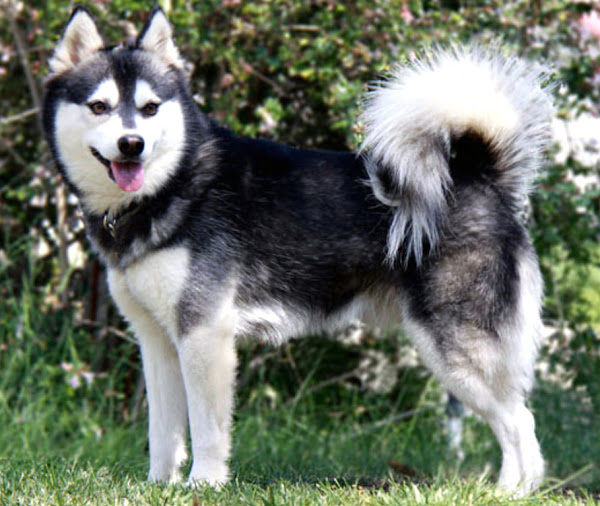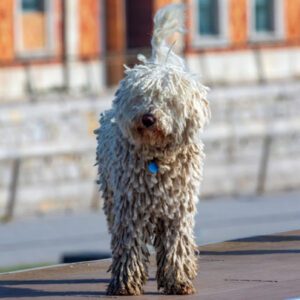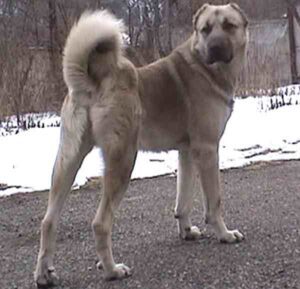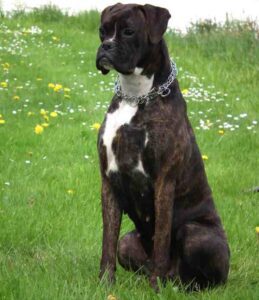The Alaskan Klee Kai dog is a spitz-type breed of dog. Unlike the Siberian and Alaskan Husky dogs, the Alaskan Klee Kais are meant to be companion dogs, rather than working animals that pull sleds. They are beautiful, energetic and intelligent dogs with an appearance that reflects it’s northern heritage.
As the name suggests, the Alaskan Klee Kai dog originated from United States. It was developed in the late twentieth Century as a companion-size dog, resembling the larger Alaskan Malamute.[1]
The Alaskan Klee Kai hills from Wasilla, Alaska where the breed was developed. It was developed by a woman named Linda S. Spurlin and her family. She wanted to create a small type of Husky that could serve as a companion dog after she saw a small version of a Siberian Husky in Oklahoma.
So, when she returned to Alaska, she got to work creating the dog that we recognize as the Alaskan Klee Kai dog today. Unlike some breeders who wish to create smaller breeds, Spurlin did not breed dogs that suffered from dwarfism. Instead, she bred Siberian and Alaskan Huskies with breeds like the Schipperke and Alaskan Eskimo Dog to reduce the size of the puppies.
About ten years after unveiling the Alaskan Klee Kai to the public, Spurlin retired from breeding, though other breeders continue to produce theses dogs. Today the breed remains rare, and they are few in number.
As a newer breed, the Alaskan Klee Kai dog breed has not been recognized by some kennel clubs as a purebred dog, including the AKC. Although the breed has been recognized by the American Rare Breed Association since 1995, and the United Kennel Club since 1997.
Alaskan Klee Kai Dog Characteristics
The Alaskan Klee Kai dogs are very beautiful animals. There are three coat colors that are recognized as breed standards for the Alaskan Klee Kai. These include red and white, black and white and gray and white. Although, solid white colored dogs have also been seen.
The coat of the Alaskan Klee Kai dogs can be standard or full-coat. Both are double coats, meaning there is a short, soft undercoat and a longer, coarser outer coat that protects the dogs from extreme weather.
Average height of a mature Alaskan Klee Kai dog is between 13 and 17 inches at the withers. And average live body weight of a mature dog is between 2.27 and 9.98 kg.

Temperament
The Alaskan Klee Kai dogs are intelligent, energetic and loving their families. They generally don’t care much for strangers and require lifelong socialization training if they are to be friendly to new people. Their wariness of new faces does, however, make them excellent watchdogs.
The Alaskan Klee Kai dogs are quick to pick up on basic commands and may even find themselves at the top of the class, when it comes to training. They are eager to please and highly food motivated. And they are more than capable of taking on agility training, which can help burn of some of their high energy throughout the day.
Once they have at least a good, long walk and a healthy play session, they are usually happy to spend the rest of the day being couch potatoes. But if you neglect their exercise needs, then they may become bored, anxious and destructive. Be careful on walks, as these dogs have a high prey drive that may cause them to bolt if they see wildlife.
The Alaskan Klee Kai dogs generally love to be the center of attention in their families. But they will also be vocal when you will not met their needs. They can be sensitive, and they will bark and whine to express their displeasure.[2]
Lifespan
Average lifespan of the Alaskan Klee Kai dog is between 12 and 16 ears.
Feeding
How much a mature dog eats depends on it’s size, age, build, metabolism and activity level. Dogs are individuals, just like people, and they don’t all need the same amount of food.
The Alaskan Klee Kai dogs are high energy dogs that need a diet that will fuel them throughout the day. Although their energetic nature makes their potential for weight gain fairly low, they need to maintain appropriate nutrition to stay healthy. Consult with your vet for better recommendation.
Caring
Taking good care of the animals is very important for raising Alaskan Klee Kai dogs. It is very important to ensure that their exercise needs are met.
Because they may become high strung and anxious if they do not have an outlet to burn off energy. Like many other dog breeds, they require regular teeth brushing, nail clippings and ear cleanings.
Health
The Alaskan Klee Kai dogs are considered to be quite healthy with a few genetic problems. You should be aware that the breed is predisposed to certain conditions that they should keep an eye out for.
Their common problems include luxating patella, thyroid disease, heart conditions, liver shunts and cataracts. They may also keep their baby teeth, which can cause problems when adult teeth grow in. They may need to have these teeth removed.
| Breed Name | Alaskan Klee Kai |
| Other Names | None |
| Breed Size | Small |
| Height | Between 13 and 17 inches at the withers |
| Weight | Between 2.27 and 9.98 kg |
| Good as pets | Yes |
| Climate Tolerance | Cool climates |
| Color | Many, but red and white, black and white and gray and white are common |
| Lifespan | 12 to 16 years |
| Good for children | Yes |
| Rarity | Rare |
| Country of Origin | United States |






